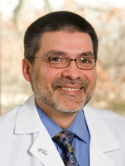Use of and beliefs about total body photography and dermatoscopy among US dermatology training programs: An update Journal Article
| Authors: | Terushkin, V.; Oliveria, S. A.; Marghoob, A. A.; Halpern, A. C. |
| Article Title: | Use of and beliefs about total body photography and dermatoscopy among US dermatology training programs: An update |
| Abstract: | Background: Total body photography (TBP) and dermatoscopy are imaging techniques used to treat patients with pigmented lesions. Objective: We sought to describe use, training, logistics, and beliefs about these tools among residency programs and to assess changes during a 10-year period. Methods: Surveys were sent to all directors (n = 111) and chief residents (n = 109) of US dermatology training programs. Results: A total of 83 (74.8%) attendings answered the questionnaire. In all, 59 (71.1%) reported using TBP, an 11.9% increase (P = .2484) over the past decade. Reasons for using TBP included: reduces patient anxiety (81.4%), helps detect early melanoma (78.0%), and leads to fewer biopsies (66.1%). Logistical (79.2%) and financial (45.8%) constraints were reasons for not using TBP. Seventy respondents (84.3%) reported using dermatoscopy, a 40.0% increase (P = .0001) over the 10-year period. Reasons for dermatoscopy use were consistent over time: helps find melanoma in curable stage (75.7%), reduces patient anxiety (61.4%), and leads to fewer biopsies (57.1%). The most common reason for not using dermatoscopy remained lack of training (38.5%). A total of 92 (84.4%) residents completed their survey, of which 41 (44.6%) and 81 (88.0%) reported using TBP and dermatoscopy, respectively. In all, 62 (67.4%) and 79 (85.9%) respondents would prefer additional training in TBP and dermatoscopy, respectively. Limitations: Results may not be applicable to the general dermatology community. Conclusions: Use of dermatoscopy among residency programs has increased significantly during the last decade. A more modest increase in the use of TBP was observed. Barriers to diffusion of these technologies into practice persist, including insufficient logistics and training. © 2010 American Academy of Dermatology, Inc. |
| Keywords: | united states; cancer diagnosis; melanoma; dermoscopy; skin biopsy; diagnostic imaging; epiluminescence microscopy; questionnaires; questionnaire; melanocytic nevus; nevus, pigmented; clinical competence; internship and residency; early diagnosis; dermatoscopy; medical practice; anxiety; total body photography; dysplastic nevus; physician attitude; photography; dermatology; education program; residency education; congenital nevus; survey; culture; dermatology residency programs |
| Journal Title: | Journal of the American Academy of Dermatology |
| Volume: | 62 |
| Issue: | 5 |
| ISSN: | 0190-9622 |
| Publisher: | Mosby Elsevier |
| Date Published: | 2010-05-01 |
| Start Page: | 794 |
| End Page: | 803 |
| Language: | English |
| DOI: | 10.1016/j.jaad.2009.09.008 |
| PUBMED: | 20223561 |
| PROVIDER: | scopus |
| DOI/URL: | |
| Notes: | --- - "Cited By (since 1996): 3" - "Export Date: 20 April 2011" - "CODEN: JAADD" - "Source: Scopus" |
Altmetric
Citation Impact
BMJ Impact Analytics
Related MSK Work





